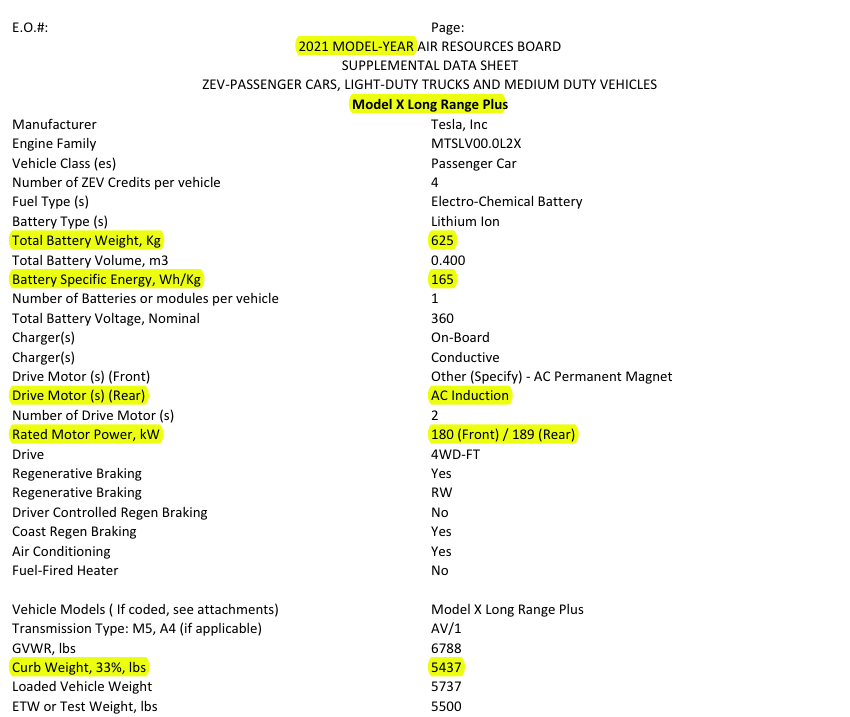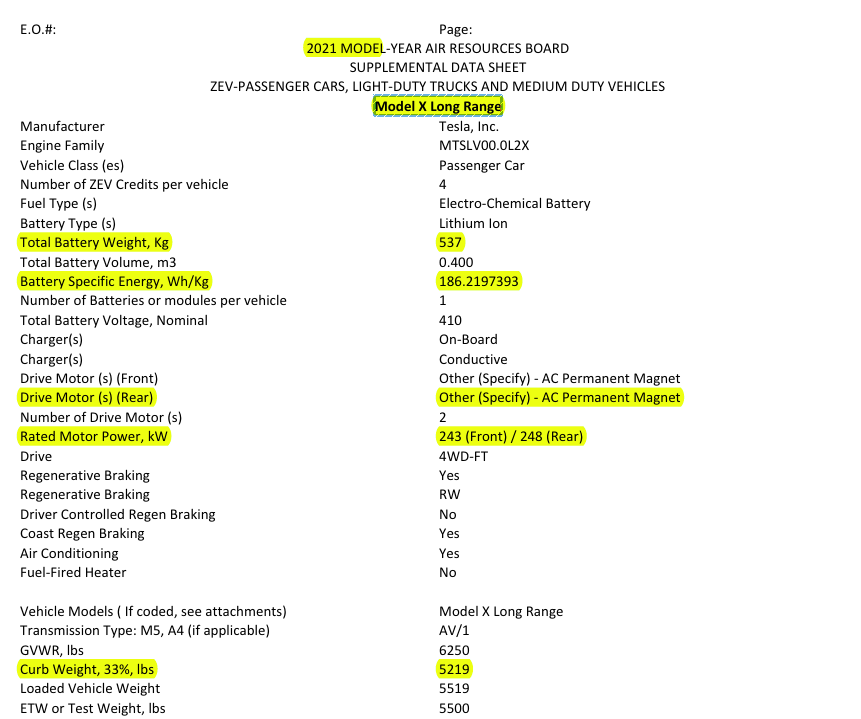
New EPA documents reveal the main powertrain upgrades that Tesla applied to the new Model X – higher battery energy density and more powerful motors.
With the Model S and Model X refresh, Tesla has remained somewhat opaque regarding some of the changes under the hood.
The company revealed its new carbon-wrapped rotor in the Model S Plaid and discussed some battery pack improvements to the new Model S and Model X, but that’s about it.
Electrek previously reported on the main thermal improvements to the Model S/X battery pack in the refreshed versions:
The changes are mainly focused on thermal performance. For example, the automaker has developed new coolant channels to allow for cross-flow, making temperatures more consistent across each channel inside the battery pack.
There are two main performance improvements that are enabled by the new thermal performance of the new battery pack: faster charging that is now on par with Model 3 and Model Y at 250 kW and repeatability of power out for consistent back-to-back quarter-mile runs or laps.
But now we get some data points with the EPA releasing new documents about the refreshed Model X.
Here are the updated EPA datasheets of the Model X (via Tempermanant):
Those specs are not necessarily the official specs from Tesla, as the automaker has disputed how the EPA lists specs in the past, but they are still important data points compared to the 2020 version.
First off, it shows an important improvement in battery pack-level energy density from 165 Wh/kg to 186.21 Wh/kg.
The overall energy capacity went down from 103 kWh to 100 kWh.
The range of the Model X, however, was hardly affected by the slight decrease in overall capacity. While it lost 3 kWh of capacity, the pack itself is also 88lbs lighter, and the car as a whole is 200 lbs lighter, offsetting the decreased battery capacity.
As previously reported, the voltage of the pack also increased from 360-volts to 410-volts.
According to the EPA datasheet, one of the biggest changes is the confirmation that the Long Range version also gets new motors like the Plaid, and they are significantly more powerful than the previous motors.
Tesla has switched both motors to AC permanent magnet motors and increased the power to 243 kW in the front motor and 248 kW in the rear motor.
Subscribe to Electrek on YouTube for exclusive videos and subscribe to the podcast.
Author: Fred Lambert
Source: Electrek





